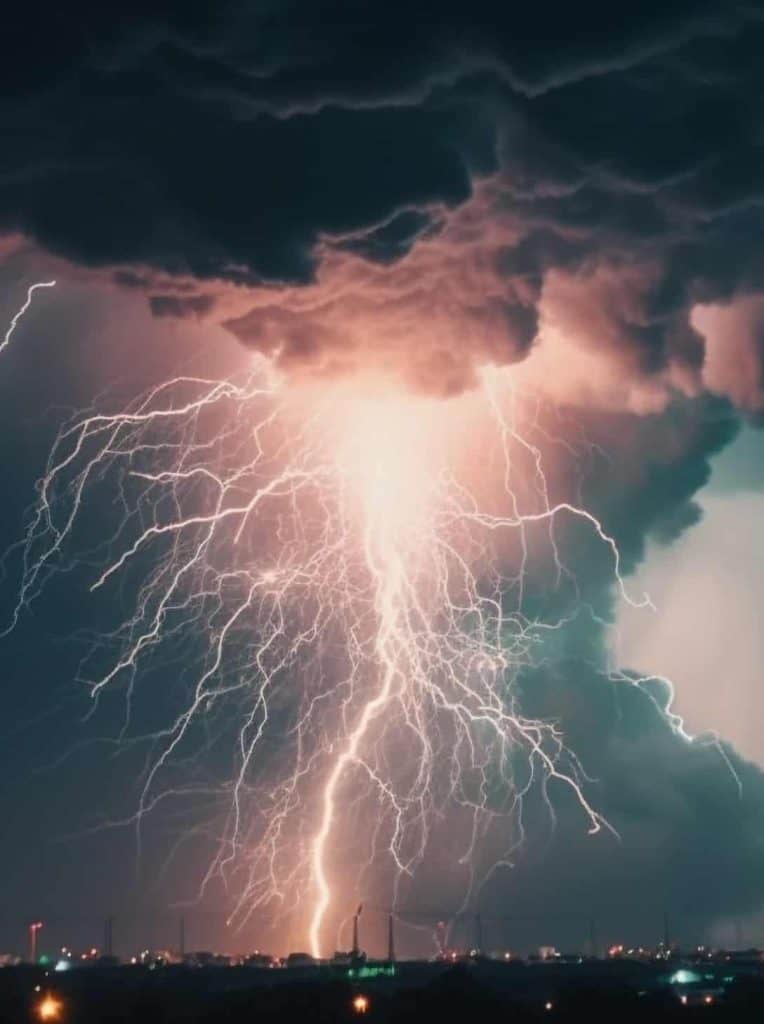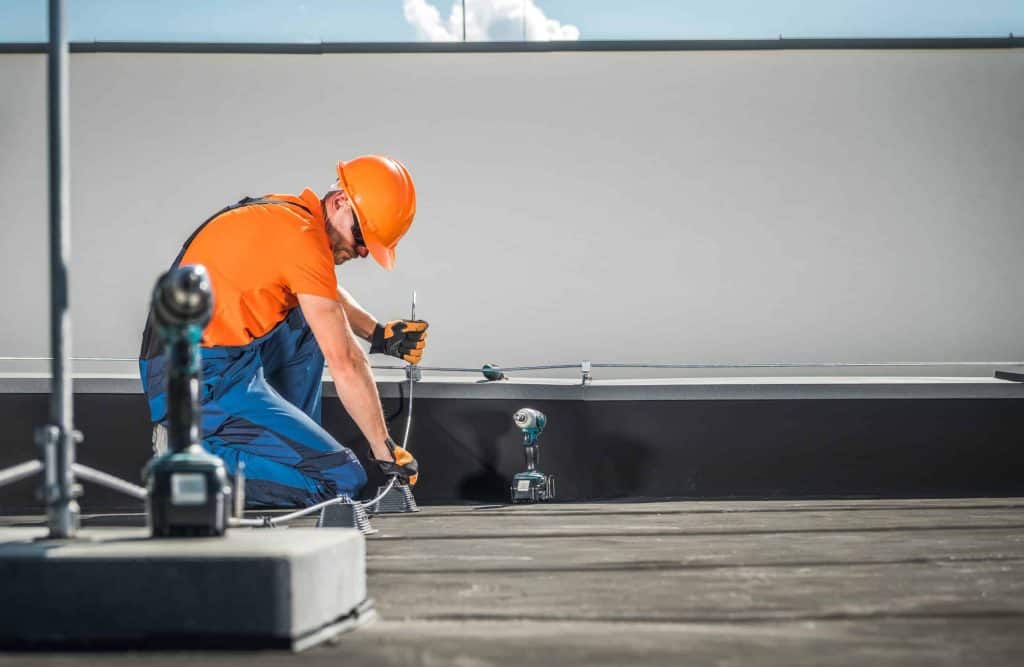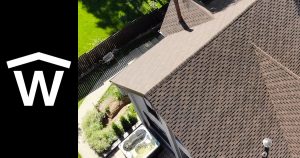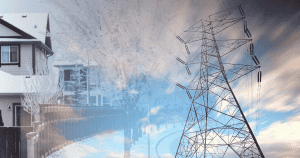Have you ever watched a thunderstorm and wondered about the power of the lightning streaking across the sky? As we step into the stormy season in Calgary, it’s important to remember that lightning is more than just a spectacular light show. It can cause significant damage to our homes, particularly our roofs.
We’ll delve into the impact of lightning on different roofing materials, discuss protection measures, and explore the frequency of lightning strikes in Calgary.
The Science of Lightning Strikes

Ever experienced a static shock after shuffling your feet on a carpet? That’s essentially what lightning is, just on a much grander scale. It forms in storm clouds when tiny ice particles collide and create an electric charge. When the charge builds up enough, it forces a path through the air, resulting in the bright flash we know as lightning.
Why Lightning Strikes Certain Objects
It’s all about finding the path of least resistance, usually the tallest object. And remember, lightning can strike from kilometres away, even if the storm isn’t directly overhead. Occasionally, your home is that object.
If you want a more in-depth look or are just curious, check out NASA’s Explanation.
Also, make sure you understand some common lightning myths.

What Is the Actual Chance of Your Home Getting Hit by Lightning in Calgary?
Ever wondered about the odds of your Calgary home playing host to a lightning bolt? It might seem far-fetched, but ask Simon Corrin of University Heights. His bungalow was the unfortunate guest of a lightning bolt, resulting in a fire. And it’s not an isolated incident – fire officials have been seeing more of these unwelcome visits.
Now, you might be thinking, ‘What are the chances, really?’ Well, it’s a bit of a mixed bag. We don’t have exact numbers for Calgary or Alberta, but there’s a post floating around suggesting a 1 in 200 chance of your home being struck. Sounds high, right? Especially when you compare it to the 1 in 1.9 million chance of you personally winning the ‘struck by lightning’ lottery. But take that with a grain of salt – the post doesn’t spill the beans on where it got its numbers.
To give you some perspective, let’s look at the bigger picture. From 1999 to 2018, Calgary was the stage for a grand total of 25,268 cloud-to-ground lightning. This doesn’t mention homes or anything else, but to see a number in the thousands when compared to the population of Calgary in the millions helps put things into perspective.
Now if you happen to live in a skyscraper your chance goes up considerably, but those buildings are often designed to mitigate lightning strikes if not nullify their effects completely, which we will go over later.
The Impact of Lightning Strikes on Roofs
Just as a static shock can catch you off guard, a lightning strike can significantly affect your roof, with the damage varying based on the type of roofing material. It’s important to clarify that while lightning can cause substantial damage, it shouldn’t be the primary factor in choosing your roof. In the grand scheme of your roof’s performance, lightning strikes are less common and shouldn’t be the main concern. If lightning protection is a priority, refer to the next section about safeguarding against lightning strikes before deciding on roofing materials based solely on their resistance to lightning. For educational purposes, here’s a brief overview of the potential damage different materials may sustain.
Effects on Different Roofing Materials
The recurring themes here are the potential for significant roof damage from lightning, the fact that no material is immune to lightning, and the importance of proper grounding and lightning protection systems. Remember, the material of the roof won’t prevent a lightning strike or stop the lightning from reaching the ground, but it can influence the path the lightning takes and the type and amount of damage it causes.
- Asphalt shingles can be severely damaged by a lightning strike. The intense heat can melt or even vaporize the shingles, leaving a hole in the roof. In some cases, the electrical discharge can cause the shingles to explode off the roof, leading to even more extensive damage. The lightning’s path to the ground may also cause electrical damage inside the home.
- Cedar shakes, while durable and resistant to many natural elements, are not immune to lightning. A lightning strike can cause them to splinter or catch fire, especially if they are dry. The energy from the lightning can also travel to other parts of the building, causing damage to electrical systems and potentially starting fires.
- Rubber roofing, like Euroshield have insulating properties, can resist the immediate effects of a lightning strike better than some other materials. However, the intense heat generated by a strike can still cause damage, potentially melting or warping the rubber. The lightning’s path to the ground may also cause electrical damage inside the home.
- Contrary to popular belief, metal roofs are not more likely to be hit by lightning. However, if a metal roof does get struck, it can conduct the electricity over a wider area, potentially reducing the localized damage. But remember, the heat from the lightning can still cause damage or even start a fire if the roof is not properly grounded. The grounding also helps to direct the lightning’s energy safely into the ground, reducing the risk of electrical damage inside the home.
Identifying Lightning Damage
Is Your Home on Fire? Do You Have a New Skylight You Didn’t Ask For?
If you answered “yes” to either of these questions, you’ve likely experienced a lightning strike. The vast majority of strikes will leave visible damage, but every so often it might be hard to spot unless you get up on the roof. And even when the path to ground dissipates the energy of the strike, there can still be damage that needs to be inspected.
If you’re fairly certain your home was struck, but you don’t see anything right away, don’t just shrug it off. It’s still important to get it checked out. Popping your head in the attic or calling a professional to inspect your roof can reveal hidden damage that isn’t immediately apparent. Because when it comes to lightning, what you don’t see can still hurt your home.\

Protecting Your Roof from Lightning Strikes
While we can’t control the weather, we can take steps to protect our homes and buildings from the effects of lightning strikes. This is particularly critical for commercial buildings or taller structures, which are more likely to be struck by lightning due to their height.
Lightning Rods and other Roof Lightning Protection Systems
One of the most effective ways to protect your building from lightning is to install a lightning rod. This protection system is a metal rod or conductor that is installed on the top of the building. It’s connected to a wire that leads down to the ground. When lightning strikes, it hits the rod instead of your building, and the electricity travels safely down the wire into the ground.
In addition to lightning rods, it’s also important to ensure that your building’s electrical system is properly grounded. This can help prevent electrical surges that can occur if your building is struck by lightning. These measures are particularly crucial for commercial buildings or taller structures. Commercial lightning protection is also more complex and can have different levels of protection, discussed in the previous link.
Insurance Considerations for Lightning-Struck Roofs
When lightning strikes, it can leave a trail of destruction in its wake. But there’s one silver lining – your homeowner’s insurance policy may cover the damage.
Understanding Your Policy
Every insurance policy is different, so it’s crucial to understand what yours covers. Most standard homeowner’s insurance policies in Calgary cover damage caused by lightning strikes. This coverage typically includes the cost to repair or replace your roof. It can also cover damage to the interior of your home. For instance, if a lightning strike results in a fire or if rain enters through a hole in the roof, your policy may cover the associated damages.
However, it’s always a good idea to check with your insurance provider to understand the specifics of your policy. For instance, some policies may have a separate deductible for lightning damage, or may only cover certain types of roofs.
Final Thought
Dealing with lightning strikes isn’t a part of every roofer’s daily routine—it’s not an everyday occurrence, but it still happens. Beyond the obvious repairs, having your roof inspected after a strike is crucial. This isn’t just a cursory glance; it’s a thorough investigation into the extent of the damage, which might be more extensive than what’s visible or typical for your area. If you need your roof inspected following a lightning strike, don’t hesitate to contact us. We’re here to help ensure your home is safe and sound, regardless of what Mother Nature throws at it. Don’t wait until the next storm—reach out today to schedule an inspection or to ask any questions about your roof’s health.


